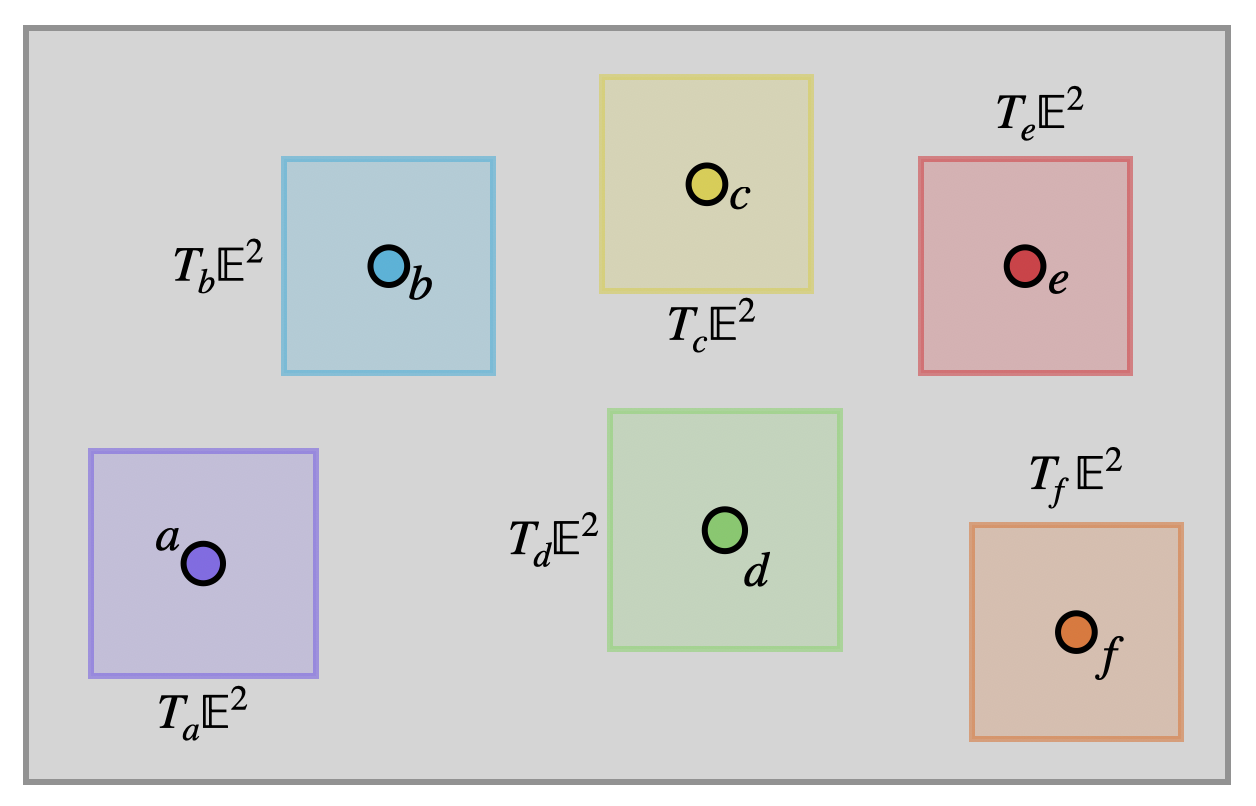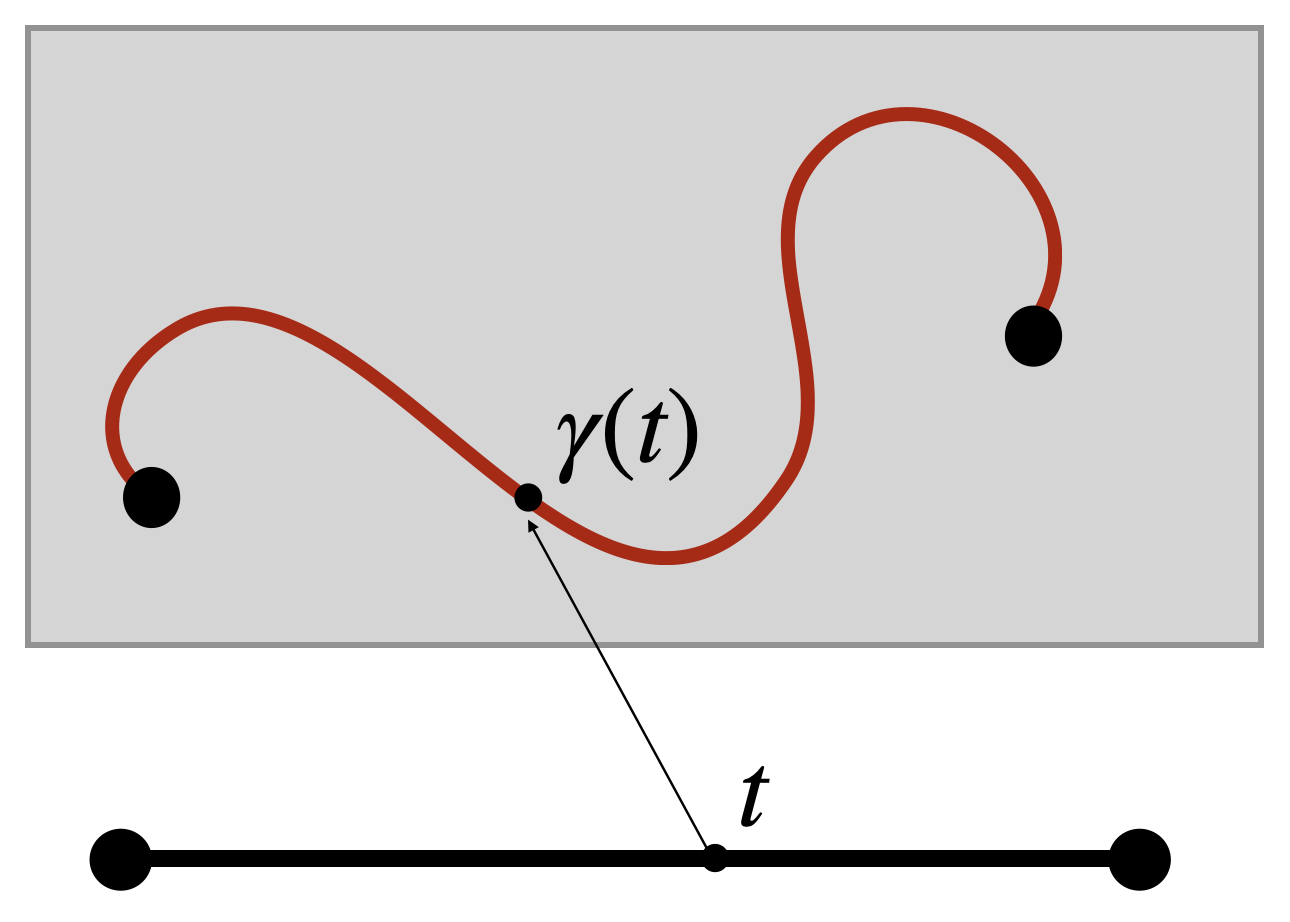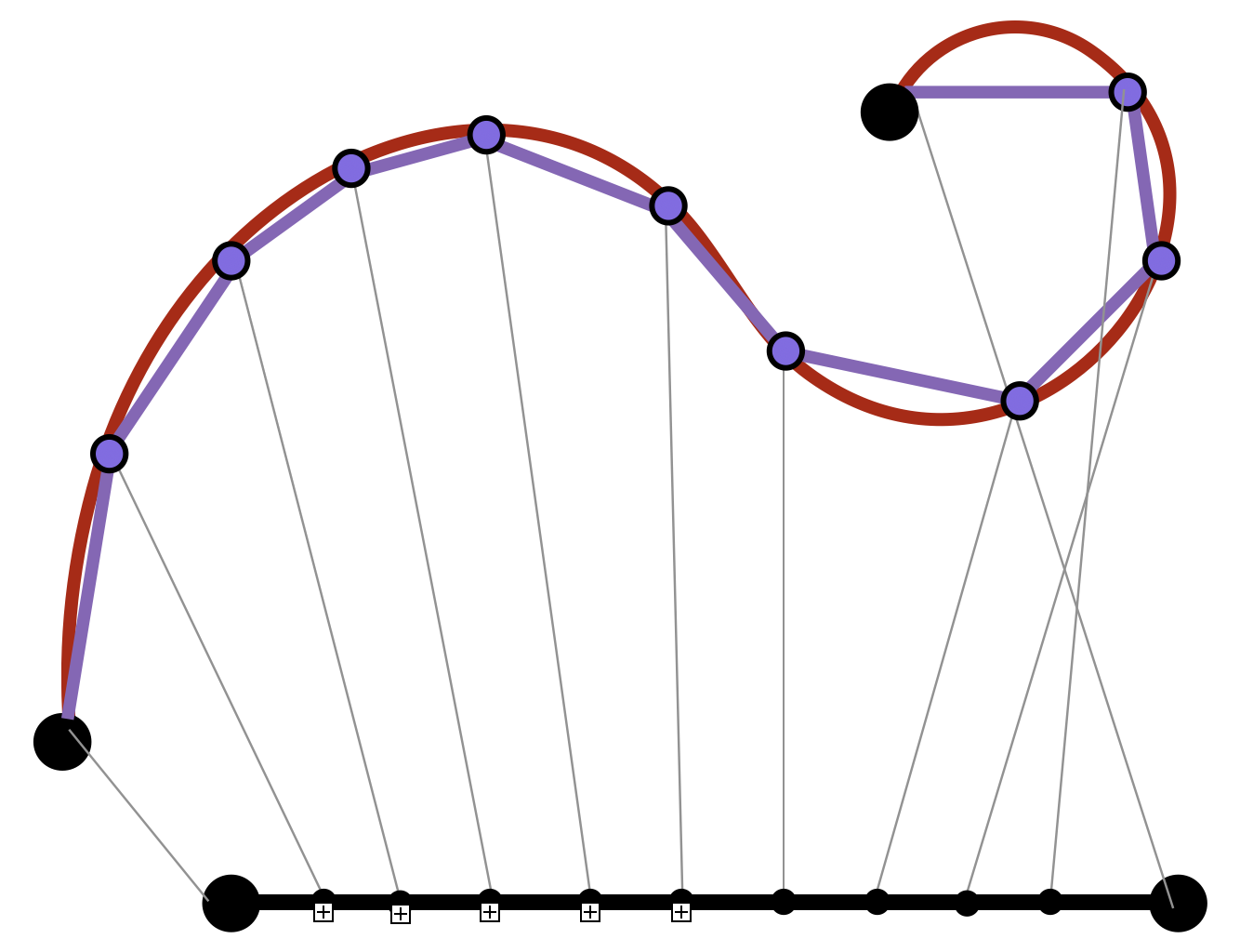10 Foundations
Definition 10.1 (Points of

We use the notation
Definition 10.2 (Vectors of
Vectors are just pairs of real numbers as we are used to, but we do need to be careful about keeping track of where they are based. Hence, we will often write a subscript on a vector to denote where it lives:
The origin is the point with coordinates
Now we have a precise definition of what the Euclidean plane is made out of (points) and its infinitesimal pieces ( vectors), so we can precisely define things like curves and their tangents.

Definition 10.3 (Curves) A curve in the Euclidean plane is a function
A curve is regular if its derivative is never equal to the zero vector for ant
But to make real progress, we need the tools to be able to measure length.
10.1 Length of Curves
Our new formulation of geometry puts all curves on an equal footing - an allows us to measure their lengths using the ideas of calculus. This was the dream of Archimedes, realized only nearly two millennia after his death.
Idea: infinitesimally, geometry looks like what was studied by the greeks, as if you zoom in on any curve it appears as a line. To impose this fact on our new geometry we will measure infinitesimal distances via the pythagorean theorem. This will be our only geometric axiom - from this alone (together with the tools of calculus) we will rebuild all of geometry.

Definition 10.4 (Infinitesimal Length in
To measure a curve we take inspiration from Archimedes’ measurement of the circle and approximate it with small line segments. A curve is called rectifiable if these approximate lengths converge as their number tends to infinity. It’s a consequence of calculus that regular curves are rectifiable.

Then we define the length of real curves by zooming out (integrating) their zoomed-in (differential) lengths. Unlike in Euclid’s formulation, now all curves are on an equal footing: all lengths are determined by infinitesimal integration!
Definition 10.5 (Length in

Its helpful to write this definition out in full: if
Such integrals can be difficult to do in practice because of that nasty square root that shows up in their definition. And when they are possible, these often need several calculus tricks to succeed:
Exercise 10.1 (The Length of a Parabola) Find the length of the parabola
- Parameterize the curve as
- Perform the trigonometric substitution
- Let
- After parts, use the trigonometric identity
- Get both copies of
- Relate this back to your original integral, and undo the substitution
- Finally, you have the antiderivative in terms of
Our main use isn’t to compute the lengths of a bunch of random curves. Instead, its more theoretical - the integral gives a precise definition for the length of any differentiable curve, and a simple definition at that! This will be extremely useful in building geometry back from our small foundations.
10.1.1 Parameterization Invariance
All seems well and good with this definition, but the mathematician in us should be a little worried: we defined the length of a curve in terms of a parameterization, but the curve itself doesn’t care how we parameterize it!
To get a sense of this its easiest to look at an explicit example: below are four different curves which all trace out the same set of points in the plane: the segment of the
Because these all describe the same set of points, we of course want them to have the same length! But our definition of the length function involves integrating infinitesimal arclengths (derivatives), and these curves don’t all have the same derivative! Thus, to really make sure our definition makes sense, we need to check that it doesn’t matter which parameterization we use, we will always get the same length.
Exercise 10.2 Check these three parameterizations of the segment of the
Two curves are said to have the same image if the set of points they trace out in the plane are the same. So, all three of the curves above have the same image, and the same length. This requires a bit more calculus to check in general, but remains true.

Theorem 10.1 (Length & Parameterization Invariance) If
Proof. Let

We can use this to wite the curve
Where we used the chain rule in the last step to differentiate the composition. Now,
:::{#rem-curves} T here are some things we need to be careful on here: the curves